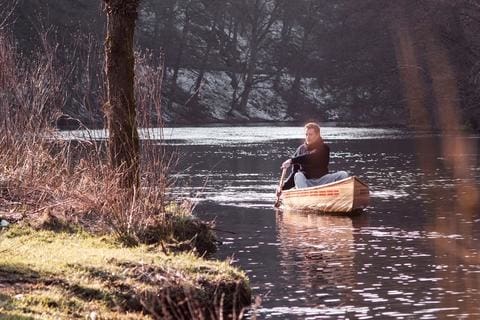Building a Kayak One Frame at a Time: The Work of w.werft
Posted on July 22 2016
We’ve seen lots of canoe building videos, and made quite a few ourselves. Terms and techniques that sound arcane on the page often turn out to be comparatively easy to explain visually, so videos make an ideal companion to written instruction. For that reason, their format tends to be functional first.
That makes perfect sense for anyone following along from their garage. However, it also means there’s room for surprising artistic innovations in this field. Fritz Siepen and his brother Carl of Wuppertal, Germany, who go by w.werft online, delighted us recently with their creative approach to filming a kayak build. Their film still coveys the process clearly, but the use of stop-motion animation adds a fresh layer we haven't seen before.
In the video, a kayak magically assembles itself in an empty workshop. Small details personify the tools – a bottle of glue needs an assist from a roll of tape to get where it’s going, and the pieces move in a rhythm that’s almost hypnotic. The sound plays almost as big a role in creating the atmosphere. It’s the kind of whimsy you can imagine playing equally well with kids and adults. We were so taken with it we reached out to Fritz to ask him about his inspirations.
For something so well-presented, it turns out the stop-motion videos were surprisingly spur of the moment. “The stopmotion was a spontaneous idea of my brother and me,” Fritz writes. “We made our first one of a new handplane, as content for our Facebook page.” However, the idea arose from a longstanding passion for photography and experimentation. Fritz and Carl built their first canoe together in 2014. For Fritz, it was an opportunity to work hands-on and a welcome release from a degree in landscape architecture that felt too theoretical. Canoecraft was an inspiration, along with the work of Gil Gilpatrick, Nick Offerman, and Nick Schade.
Fritz and Carl's first stop-motion experiment
That landscape architecture degree came in handy for his next project, as Fritz was already proficient with the CAD software he used to design a kayak. We asked how he approached learning stop motion, and found he was pretty technically adept there as well. “In videography I like to get extremely close to the subject (almost like with a macro lens). I mostly use relatively short cuts and I work with a DSLR for a good control of the depth of field.” He lists Frank Howarth’s “Self-Assembling Table Saw” as an inspiration. Despite his previous experience with photography and canoe building, combining two disciplines introduced unique challenges to both. “I always worried about the glue, because it takes so much time to shoot the video. I was afraid to ‘half-glue’ a strip and end up unable to reverse it.”
Practicalities aside, the stop-motion clips have a strong creative impulse underpinning them that seems to extend to Fritz’s other work. “My current project is a cedarstrip seakayak, and after that I wanna try to build a SUP from boards of a 23-year-old terrace, which my parents built from western red cedar. The wood is looking very rotten but seems to have usable parts left inside, so I'm optimistic. The impulse to this project is not to save money, but to know that it’s made from the wood on which I spend almost my whole childhood.”
You can see more of Fritz and Carl’s design work on their website, https://www.wwerft.com. They also post regularly on Instagram and their YouTube channel. “I’m interested in timelapse, still photography, analogue photography and cyanotypes,” Fritz says of potential upcoming projects. Whether these involve canoes or not, we’re really impressed by the artistic curiosity on display. We’ll be keeping an eye out for more innovative work from w.werft.

The first canoe on the water

The seakayak, fully assembled
